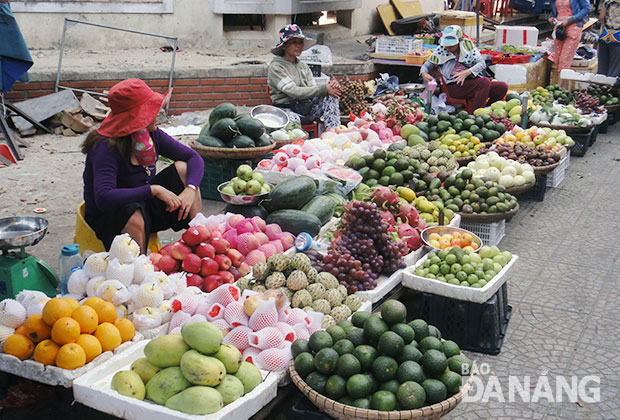Seafood safe, chemical residues found on some fruits
Last month, the Da Nang Department of Agro-Forestry-Fisheries Quality Assurance took samples of frozen seafood from 18 local frozen seafood storehouses and sent them to the Centre for Quality Assurance of Agro-Forestry-Fisheries Products Zone 2 and the Viet Nam Academy of Science and Technology for testing.
 |
| Fruit stalls at the Hoa Cuong Wholesale Market |
The aim was to check whether or not they contained toxic substances after the serious environment pollution problems which occurred along some of the beaches in the central coastal provinces in April.
The test results reaffirmed the safety of Da Nang’s seafood since no toxic substances were found in the frozen seafood samples. In addition, the content of phenol, lead, mercury, cadimi, and methyl in these samples was within allowable limits under the regulations of the Vietnamese Ministry of Health.
Last month, inspectors from the Department of Agro-Forestry-Fisheries Quality Assurance paid an inspection visit to the Hoa Cuong Wholesale Market. They took samples of pears, apples, grapes, carrots and potatoes, all imported from China, for testing.
The results found chemical residues on the tested fruits. Most notably, Chinese-imported grapes contain a total of 8 plant protection chemicals. Amongst them, hexaconazole and difenoconazole exceeded allowable limits.
The Hoa Cuong Wholesale Market is now Da Nang’s largest wholesale market with 431 stalls inside, and around 800 others outside. The market receives an average of 400 tons of fruit and vegetables every day. Of that figure, between 80 tons and 90 tons are imported from foreign countries, including China.
In attempting to deal with the problems, the Department has recently asked central relevant agencies to adjust the regulations to clearly specify the maximum limits of plant protection chemicals allowed in fruits.